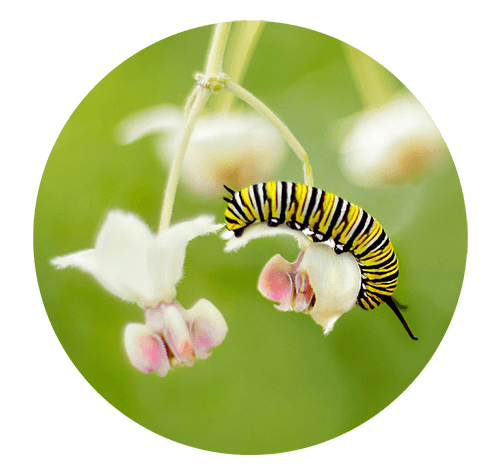When you hear about pollinator gardens, monarchs tend to steal the headlines. After all, they’ve undergone a critical recovery due to efforts by organizations like Monarch Watch, along with concerned gardeners and citizen scientists. With thousands of gardeners adding milkweed to their plantings, and with the heightened interest in tracking their migration, monarch watching has become the new birding. (You can learn more about how to support and track their migration here.)
But monarchs aren’t the only pollinators that need support. Creating a pollinator garden or adding more pollinator-friendly plants to your existing beds is a win-win: if you’re a vegetable gardener, attracting pollinators can help boost your harvest. But even if you’re not growing edibles, pollinators create the perfect entertainment in your garden, offering hours of pleasure while you relax with a refreshing beverage, watching them flit about the flowers.
While birds, insects, and bats also pollinate plants, March 14 celebrates butterflies. Impress your friends and family with fun facts for Learn About Butterflies Day.
 To create a pollinator garden that supports butterflies, you’ll need both host plants and nectar sources. Host plants are the “nurseries” of the pollinator garden. While some host plants are also nectar sources, these are the plants where butterflies lay their eggs. (Most often, you’ll find the eggs on the underside of leaves, hidden from predators, but stems and tops of leaves are also fair game.) In 10-14 days, the larva emerges, and the tiny caterpillar feasts on the plant until it forms a chrysalis, where it grows into a butterfly. Butterflies are picky about host plants. Monarchs, for instance, only lay their eggs on milkweed, Gulf fritillary butterflies only lay eggs on passion vine, and painted crescents lay on asters. Other butterflies use a variety of host plants: black swallowtails will lay eggs on fennel, carrots, parsley, and dill. Even shrubs and trees serve as host plants: eastern tiger swallowtails choose willows and sycamores for their nurseries. You can find an extensive list of butterflies and their host plants here.
To create a pollinator garden that supports butterflies, you’ll need both host plants and nectar sources. Host plants are the “nurseries” of the pollinator garden. While some host plants are also nectar sources, these are the plants where butterflies lay their eggs. (Most often, you’ll find the eggs on the underside of leaves, hidden from predators, but stems and tops of leaves are also fair game.) In 10-14 days, the larva emerges, and the tiny caterpillar feasts on the plant until it forms a chrysalis, where it grows into a butterfly. Butterflies are picky about host plants. Monarchs, for instance, only lay their eggs on milkweed, Gulf fritillary butterflies only lay eggs on passion vine, and painted crescents lay on asters. Other butterflies use a variety of host plants: black swallowtails will lay eggs on fennel, carrots, parsley, and dill. Even shrubs and trees serve as host plants: eastern tiger swallowtails choose willows and sycamores for their nurseries. You can find an extensive list of butterflies and their host plants here.
Many flowers serve as ideal nectar sources for butterflies. Most butterflies are not as picky about where they drink compared to where they lay eggs. So, those seeds you started on National Plant a Flower Day make the perfect addition to the pollinator garden.
Make sure to mix your host plants in with your nectar plants. Because the host plants will be eaten by the caterpillars, they’ll look rather raggedy. Place these toward the back of beds or mix them into beds or containers filled with blooming nectar plants that mask their less-than-pristine appearance.
If you garden in a small space, like a balcony or patio, consider creating a container pollinator garden. Pick out a pretty container with drainage holes from your local garden center, fill it with Master Nursery® Bumper Crop® Potting Soil [Eastern & Midwestern Regions | Western Region], add your host plants and nectar-rich flowers, and voila! You’ve created a perfect planting for pollinators. Don’t forget to water well and feed with Master Nursery® Bumper Crop® Rose and Flower Food to keep the plants growing and blooming all season long.
Most importantly: forgo pesticides in your pollinator garden. If you want a thriving butterfly population, the larvae need a chemical-free zone to grow and turn into beautiful butterflies.
Need more gardening inspiration? Click here.






